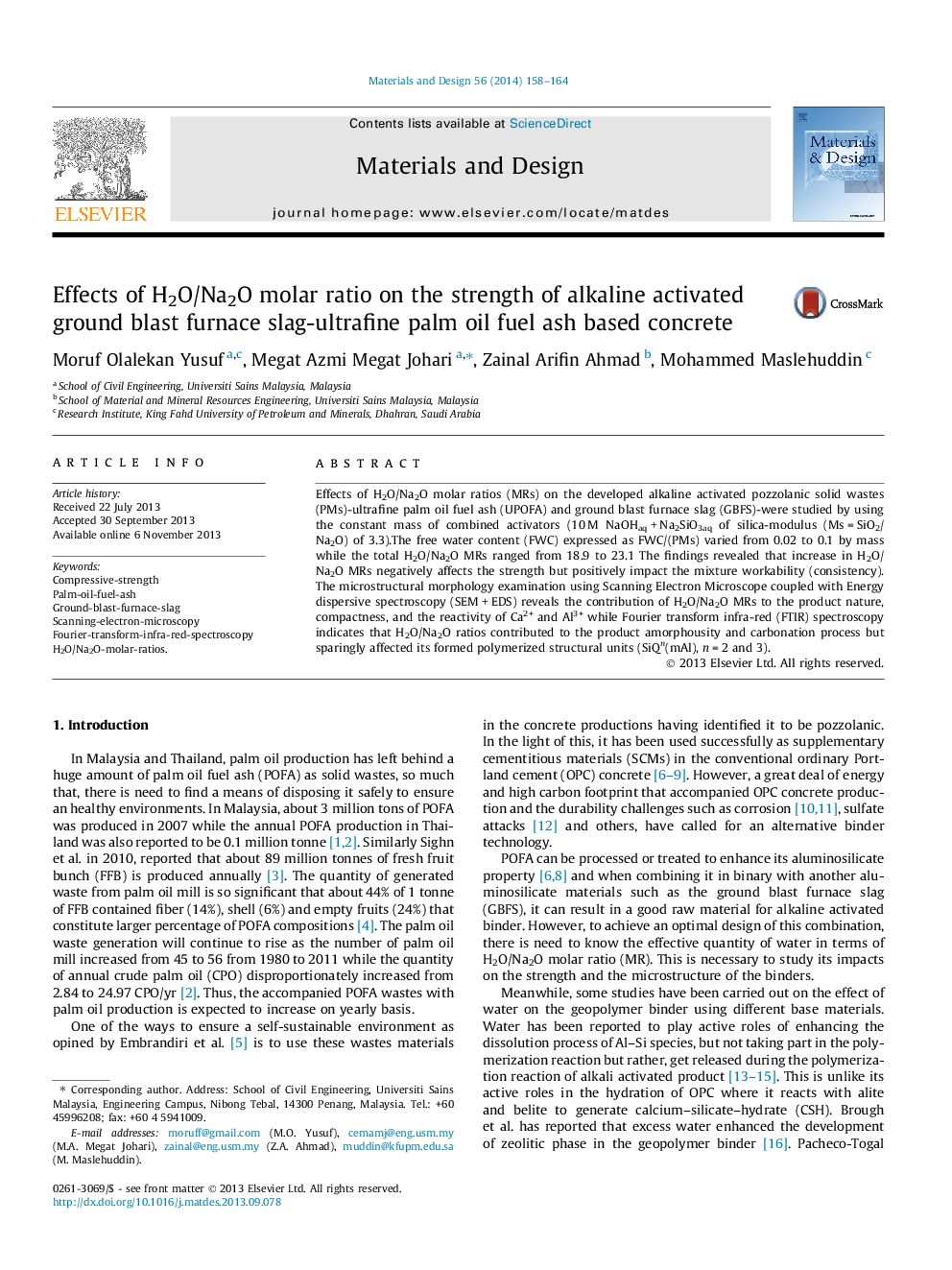| Article ID | Journal | Published Year | Pages | File Type |
|---|---|---|---|---|
| 829424 | Materials & Design (1980-2015) | 2014 | 7 Pages |
•Effects of H2O/Na2O on GBFS-POFA alkaline activated concrete are investigated.•High H2O/Na2O contents enhance dissolutions/workability at the expense of strength.•Lower H2O/Na2O molar ratios aid compressive strength of the products.•Increase in H2O/Na2O favours the reactivity of Ca and the products molecular bonds.•Low H2O/Na2O positively affects the microstructural density of the products.
Effects of H2O/Na2O molar ratios (MRs) on the developed alkaline activated pozzolanic solid wastes (PMs)-ultrafine palm oil fuel ash (UPOFA) and ground blast furnace slag (GBFS)-were studied by using the constant mass of combined activators (10 M NaOHaq + Na2SiO3aq of silica-modulus (Ms = SiO2/Na2O) of 3.3).The free water content (FWC) expressed as FWC/(PMs) varied from 0.02 to 0.1 by mass while the total H2O/Na2O MRs ranged from 18.9 to 23.1 The findings revealed that increase in H2O/Na2O MRs negatively affects the strength but positively impact the mixture workability (consistency). The microstructural morphology examination using Scanning Electron Microscope coupled with Energy dispersive spectroscopy (SEM + EDS) reveals the contribution of H2O/Na2O MRs to the product nature, compactness, and the reactivity of Ca2+ and Al3+ while Fourier transform infra-red (FTIR) spectroscopy indicates that H2O/Na2O ratios contributed to the product amorphousity and carbonation process but sparingly affected its formed polymerized structural units (SiQn(mAl), n = 2 and 3).
